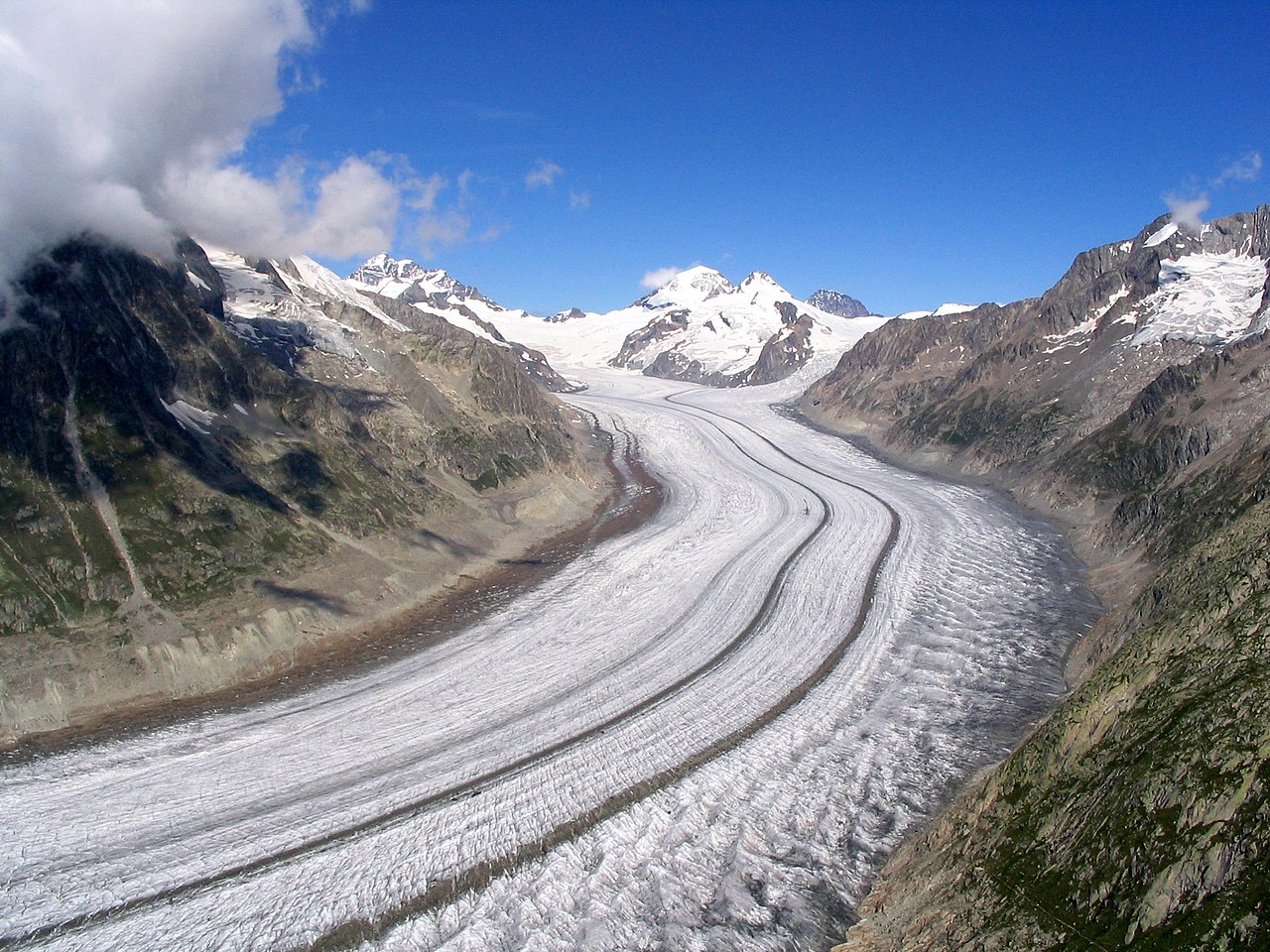
Grosser Aletschgletscher, the largest glacier in the Alps at 23 kilometers (14 miles) will lose 34% of its 15.4 cubic kilometers of ice by 2050, according to a new study in Geophysical Research Letters.
Credit: Dirk Beyer CC BY-SA 2.5
Ocean Sciences Meeting 2024 coming soon
The scientific program for #OSM24, held 18-23 February in New Orleans, is now available online. Browse nearly 5,000 abstracts on all things ocean science and register today! [OSM24 scientific program][OSM24 press registration]
AGU23 posters and recordings available through February
AGU’s 2023 annual meeting brought 24,500 Earth and space science experts to San Francisco and an additional 2,500 online participants. Recordings of scientific sessions will remain available to registered attendees on the online conference platform through the end of February. [AGU23 press event recordings][online conference platform][AGU23 advisories and press releases]
Featured Research
Erosion by flowing lava erased Moon’s missing craters
Distinctive dark plains called maria on the Moon’s ever-Earth-facing nearside are the result of ancient volcanic activity triggered by asteroid impacts on the opposite far side. These lowlands are smoother than expected. Impacts smaller than 90 kilometers wide are less common in nearside basins than in the farside highlands, even when scientist look for evidence of crater rings buried under the surface, suggesting the intense heat of lengthy mare flows 3.6 million years ago melted away the older topography. [JGR Planets research]
In the Alps, at least 34% ice loss is inevitable by 2050
Under current climate conditions, glaciers in the Alps will lose, at a minimum, 34% of their 2020 ice volume in the next quarter century regardless of future warming, according to a new study that incorporates advances in 3D modeling of ice dynamics. [Geophysical Research Letters research]
Carbon lost to winter warming in permafrost regions could cost trillions
Permafrost underlays 22% of land in the Northern Hemisphere, impounding about twice as much carbon as Earth’s atmosphere. This vast carbon sink will shrink as warming melts the ice and microbial decomposition releases stored carbon. The economic costs of becoming a carbon source will outweigh expected growth of GDP, a new analysis finds, and this flip could occur as early as 2057 if current emissions are not curtailed. [Global Biogeochemical Cycles research]
Arctic Ocean absorbs more carbon dioxide as sea ice retreats
The Arctic Ocean has been a net sink for carbon dioxide in the atmosphere from 1985 to 2018. Unlike the global ocean, the carbon uptake Arctic has almost kept pace with rising carbon dioxide in the atmosphere over this time period. The shrinking barrier of the sea ice cover has been the most important driver of this acceleration in recent years. [Global Biogeochemical Cycles research]
Ice clouds possible on Venus
Famously hot Venus is cold enough at the top of the atmospheric layer called the mesosphere to form ice clouds of water and carbon dioxide. A new study proposes a 10-kilometer-thick, invisible water ice cloud veil persists 120 kilometers above the surface. Short-lived dry ice clouds have not been observed but could be important “cold-traps” for water, preventing it from being lost to space. [JGR Planets research]